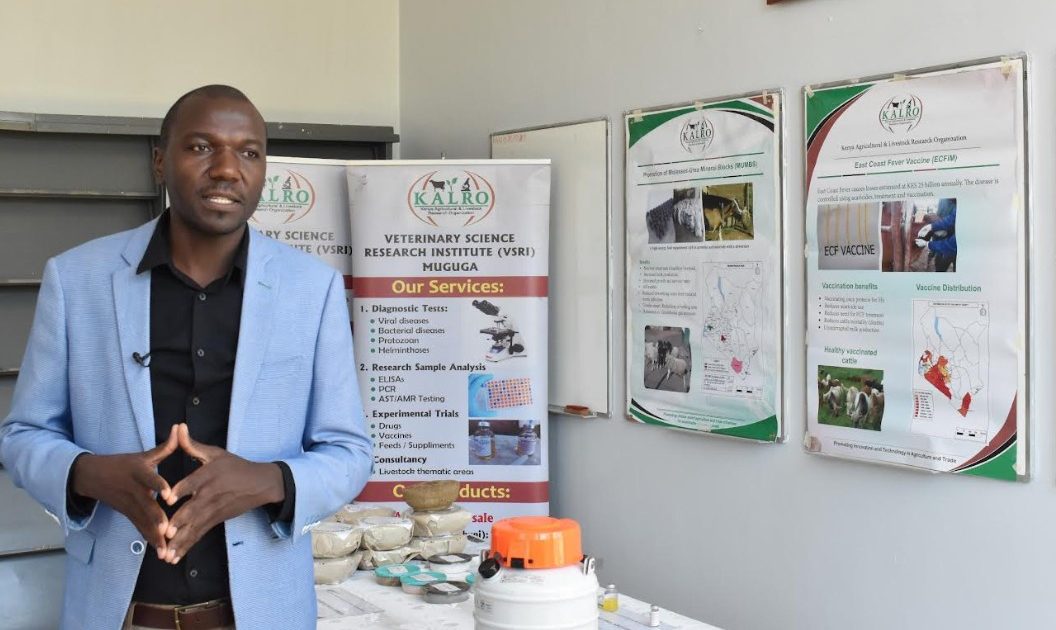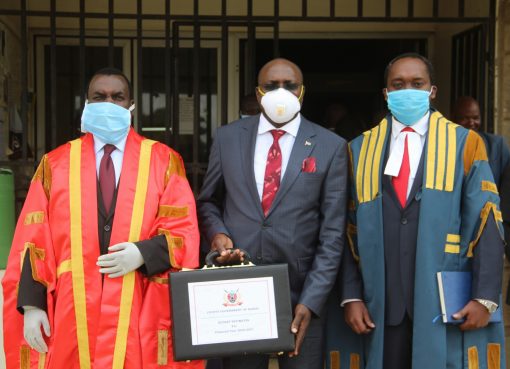Farmers can now use a rapid strip test kit using a test strip of paper to ascertain if their livestock have subclinical mastitis.
Subclinical mastitis is one that cannot be seen with the naked eye, but through the strip on their animal milk, farmers could make decisions on how to manage animals in terms of mastitis.
According to Dr. Moses Olum, a scientist from the Veterinary Science Research Institute in Muguga, over time, the institute has been doing research on various diagnostic tools and also vaccine products.
Mastitis, Dr. Olum explained to KNA, is the nightmare of every dairy farmer out there and the high producers are actually the ones that stand a very high chance of coming down with mastitis.
He further said that although there are other things out there in the market that are used to test for mastitis, they require one to have some technical knowledge to be able to interpret them and that is why the institute has produced a test kit or strip administered in a little milk to test.
“Once the colour changes, one is able to pick that the animal is either suffering from mastitis or not. If it is suffering from mastitis, the colour will change, and if it is not suffering from mastitis, it will remain the same, and this kit is able to pick all forms of mastitis. This is what is termed as clinical mastitis,” he said.
He went on to explain that clinical mastitis is when you are able to see that the animal is unwell and the milk has changed but for subclinical mastitis, one cannot see it, and the milk looks normal yet it is not of good quality.
Picking up the subclinical mastitis, which is done early, is able to assist the farmer in making a decision early so that their animals are treated and also save the others who are healthy from contracting the disease.
A 2020 study in Embu and Kajiado counties found that the overall prevalence of mastitis in dairy cows was 80 per cent, with clinical mastitis at 6.8 per cent and subclinical mastitis at 73.1 per cent.
Dr. Olum acknowledged that the production of diagnostic tests and vaccines is quite a rigorous process, as it takes quite some time and could sometimes be very expensive.
The Research Institute is having an open week from today, 4th to 7th of March and is calling on livestock farmers to visit and interact with veterinary scientists who produce the many technologies.
The farmers will get to know what the mastitis test kit looks like, how it could be utilised, and also know how much it would cost once it is registered and is available for purchase.
Dr. Olum said that some of the key highlights for the upcoming three days would be advice to the farmers on ensuring animal health, interventions needed, and looking at preventive and curative medicine.
“Farmers should feel free to take photos of their animals who are having various ailments and come ask for advice and get responses from our teams on the ground during this open week,” he said.
Other exhibitors that we’ll be having in the open week will be entities like the Kenya Veterinary Vaccines Production Institute that produces most of the vaccines used in the area, while pharmaceutical industry players will also be exhibiting various products for domestic animals.
At the same time, Dr. Olum said the research institute is developing and producing a PPR vaccine that would support thermal stabilisation such that it would only need minimal refrigeration to use, meaning it could go to very remote areas where refrigeration and cold chains are not available.
Peste des petits ruminants (PPR) is a viral disease that affects goats, sheep, and some wild relatives of domesticated small ruminants, as well as camels.
“We are targeting an eradication period by 2030 and this has been set by the AU through the AU IBA, which is the animal biogenetic resource component of the AU. All of us are working towards this eradication by 2030 and that is why we are working on diagnostics, we are working on vaccines, and hence we’re working on everything that would make it very possible to get the disease eradicated by that period,” he said.
Dr. Olum also mentioned a live vaccine that has been produced called “Infection and Treatment Method (ITM)” that would see vaccination of animals done only once in a lifetime to address the East Coast Fever.
“You vaccinate the animal once, then the animal is going to be completely immune from this disease and it is always advisable to vaccinate your calves so that they are able to go through the production cycle without coming down with ECF,” Dr. Olum, who is also the Deputy Institute Director at Muguga, said.
The Kenya Agricultural Livestock Research Organisation is carrying out open weeks in all their centers where researchers will be showcasing technologies, innovations and best practices in agriculture and livestock sectors.
By Wangari Ndirangu





